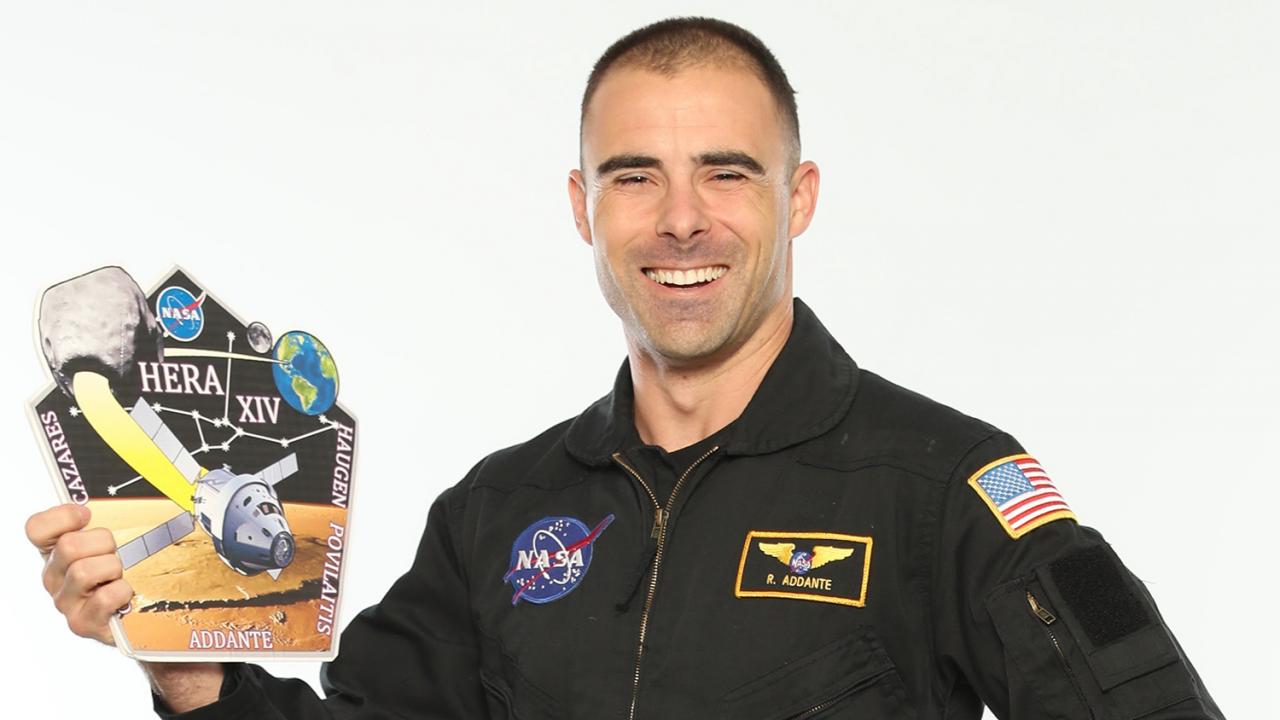
Richard Addante, ’11 Ph.D. in Neuroscience, HERA Crew Member at NASA
When Richard Addante, ’11 Ph.D., neuroscience, was 7, his mother took him to see the space shuttle Columbia launch from Cape Canaveral, Florida. At that moment, his lifelong dream to become an astronaut was born. He became enamored with space, building model rockets and devouring books on the subject.
“It was so exciting for a young boy, and it ignited a spark in me that has continued to burn with a passion to explore our world and beyond,” said Addante.
Today, Addante is an assistant professor of psychology and the director of the EEG Laboratory at California State University, San Bernardino, where he studies the neurophysiology of human memory.
While a career in neuroscience moved Addante in a different direction than his boyhood fascination with space, it provided a serendipitous opportunity to join a research project on deep space exploration. But instead of looking beyond our planet, Addante focused on the uncharted interior of the mind.
Bringing a childhood dream to life
For four months, Addante participated in the NASA Human Exploration Research Analog project as part of a simulation mission to Mars. Becoming part of the HERA team meant moving to the Johnson Space Center in Houston, Texas, going through rigorous training and living on a simulation space capsule. He remembered how it felt to don a NASA flight suit for the first time.
“That moment really underscored the power of believing in yourself,” Addante recalled. “It was surreal to realize I had never given up despite many setbacks along the way, and inspired me to keep pursuing bigger goals. If you truly believe in your dreams and are willing to do the hard work and make sacrifices, anything is possible.”
The human brain — the final frontier
Addante investigates the human brain and the neuroscience of memory. As a student researcher at UC Davis, he studied amnesia patients and found that brainwave oscillations just before a stimulus could predict the successful memory of the upcoming stimulus. By interpreting the patterns, he can predict how a brain will perform in recalling something it experienced in the past, just before it is prompted to remember the experience.
The exploration of these so-called “predictive brain states” led Addante to research other forms of nonconscious memory signals which can drive cognitive performance. He has recently applied this concept to analyze social psychological phenomena.
"Onboard" the simulation space capsule, Addante used electroencephalography (EEG) monitoring equipment to record electrical activity in the brains of the crew members. An EEG machine records electric wave patterns and can detect differences in brain wave function and illuminate potential changes in thought patterns.
These changes may be able to provide insight into the learning ability, motor function, attention and overall mental health of crew members during long space flights. His goal is to study and better understand the effects of long-term spaceflight on the brain, body and team dynamics, of which little is known.
“In the 1950s and '60s, the unknown systems for spaceflight were rocketry and engineering, and test pilots bravely did the research that led to success,” said Addante. “One of the toughest challenges for reaching Mars is understanding the psychology and team dynamics of isolation during such long trips, and this is precisely what HERA is designed to test out.”
From small steps to giant leaps at UC Davis
As a student at UC Davis, Addante fine-tuned his problem-solving abilities. To bolster his skills as a future astronaut, he took advantage of special program offerings, earning his pilot’s license at the university airport and completing master diver training at the Bodega Marine Lab. He even took a tractor driving course in hopes that it would provide a good analog for learning to operate a lunar rover.
During the HERA project, Addante found many of these skills invaluable as he worked with new technologies, systems and teammates to improve future NASA missions to space. His Russian language classes came into play as he traded small talk and mission patches with a cosmonaut.
“UC Davis provides students with an ideal incubator in which to grow,” said Addante. “It is a small community where students receive in-depth mentoring from some of the best neuroscientists in the world.”
Addante credits professors like Andy Yonelinas, Steve Luck, Arne Ekstrom and Elva Diaz for cultivating his knowledge of neuroscience and facilitating his participation in discoveries that informed the research he performs today.
While Addante has yet to make his debut in outer space, participating in the HERA project, for him, was the realization of one aspect of a lifelong dream. With a foot in the door, and NASA’s growing need to understand the neuroscience of spaceflight, his journey to becoming an astronaut might have only just launched.
